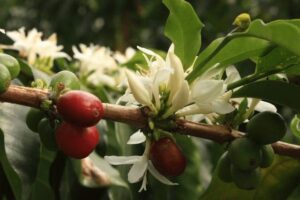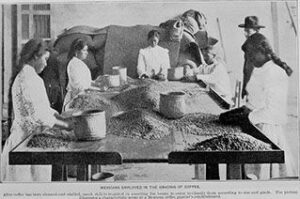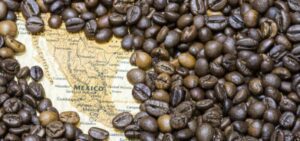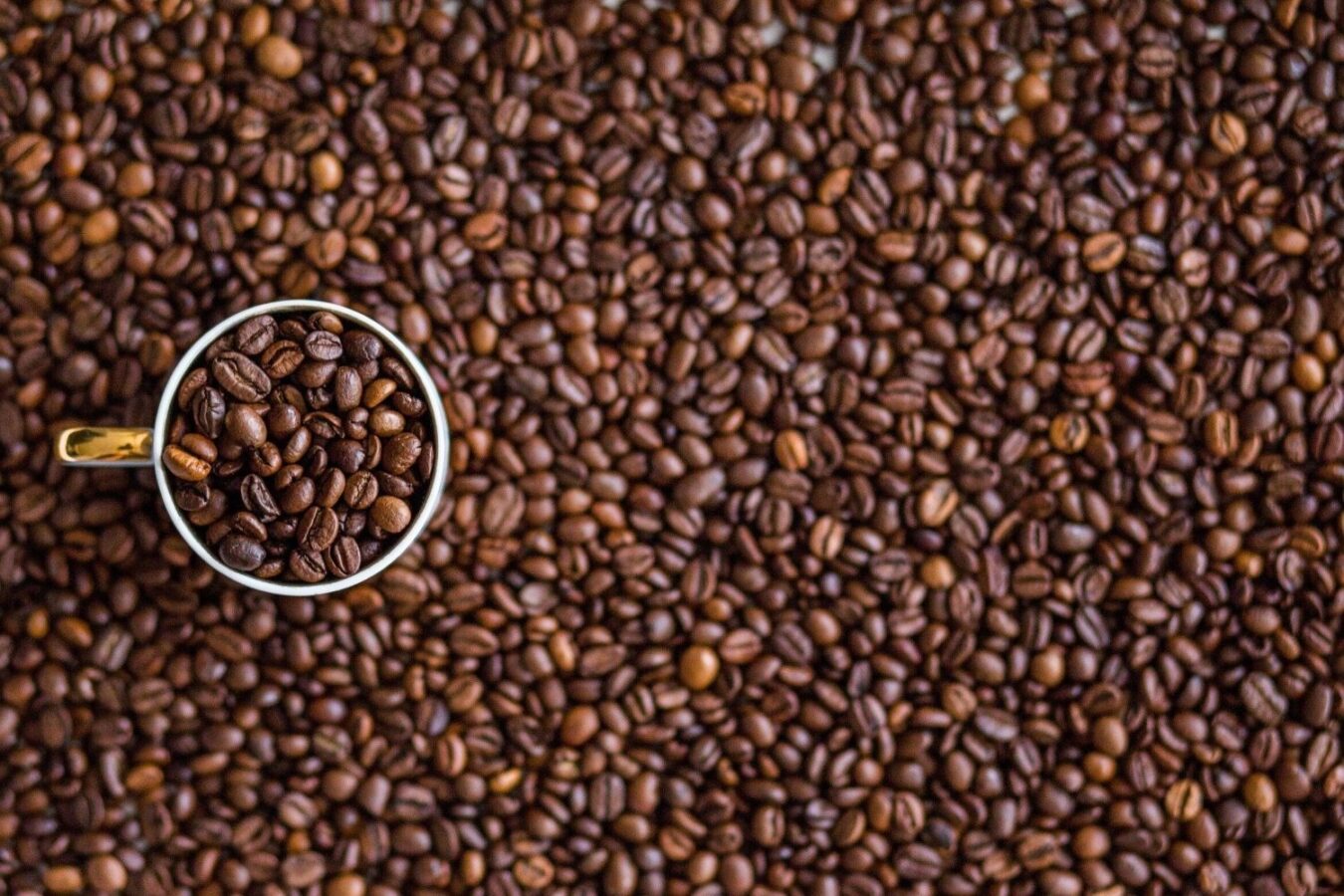Hello, my name is Abbey and I’m addicted to coffee.
And if you’re anything like me, you know that nothing compares to that feeling when you take that first sip of your morning cup of coffee, or when you catch a whiff of its delicious and comforting smell from a place nearby. Coffee has a great cultural impact on the lives of us Mexicans, which is reflected in our literature, music, and arts.
Coffee production in Mexico and the world has been in greater demand over the years, since coffee consumption has become increasingly popular among young people and adults, not only because of its energizing effects, unique flavors, and aromas but also due to a long list of potential health benefits including its ability to promote weight management, enhance athletic performance, and prevent chronic diseases.
A good cup of coffee comes with a big cup full of history, in order to appreciate more each sip, I have put together some of the most important curiosities about coffee, and not just coffee, but Mexican Coffee!
THE ROOTS OF THE COFFEE PLANT
The coffee plant is native to the province of Kaffa in northern Ethiopia, formerly called Abyssinia.
One legend says that goat herder Kaldi first discovered the potential of these beloved beans when he noticed that his goats, after eating certain berries, became so energetic that they did not want to sleep at night. Kaldi reported his findings to the abbot of the local monastery, who made a concoction with the berries, and found that it kept him alert through the long hours of evening prayer. The abbot shared his discovery with the other monks at the monastery, and knowledge of the energizing berries began to spread.
Another ancient theory says that the ancestors of the Oromo, also from Ethiopia, have been among the first to recognize coffee’s energizing effect by mixing the ground grains with fat and forming balls to use as rations in expeditions. I don’t know about you, but that sounds yummy to me.

source: perfectdailygrind.com
FROM AFRICA TO THE WORLD

source: pasionporlacocina.com
The use of coffee spread throughout the world beginning in the great middle-eastern cities of Cairo and Mecca. Due to the potent stimulant effects of coffee, its introduction in the Arab world provoked great debates. For a long time, prohibition was sought, as with wine and hashish, considering them as threats to political and social stability.
After some 200 years of Arabian exclusivity in the cultivation and trade of coffee, the Dutch were the first Europeans to obtain fertile seeds, take them to their country and cultivate the plant in greenhouses, but the climatic conditions in the Netherlands were not the most ideal for the cultivation of coffee, so they transferred these seeds to other parts of the planet, passing through Asia and parts of America, which are currently the largest producers of coffee in the world. Between the XVII and XVIII centuries, coffee began to be cultivated in India and on the island of Java, in present-day Indonesia. Coffee trees were also brought to the Dutch colony of Surinam and to Brazil.
The Dutch were the first to obtain seeds to cultivate coffee, but it was the Venetian merchants who were the first to introduce the beverage in Europe from Turkey in 1615. Only 40 years later, the first coffee shop opened in London, and within a few years in 1689, the first coffee establishments appeared on the other side of the Atlantic, in the city of Boston. In the United States of America, after the “Boston Tea Party of 1773”, drinking coffee instead of tea was considered patriotic.
COFFEE CONQUERING MEXICAN TERRITORIES

source: cafedemexico.com.mx
Coffee was introduced to Mexican soil through the port of Veracruz, there are different versions that say it was brought in the 1740s by French traders. Another theory says that the first coffee plants were brought from Cuba by a Spanish count with the purpose of growing them in the Hacienda de Guadalupe, located in the town of Amatlán de los Reyes, in Cordoba, Veracruz.
At that time, the cultivation and consumption of coffee were not very successful and cultivation for commercial purposes developed decades later, however, the first coffee plantations began to expand from Veracruz to other regions, mainly Chiapas, Puebla, and Oaxaca.
In the beginning, coffee was cultivated on farms that belonged to Europeans with mainly indigenous Mexican workers. Only after the Mexican Revolution did small farmers begin to invest in coffee cultivation in a serious way.
IMPACT OF MEXICAN COFFE PRODUCTION
Mexican Coffee is one of the world’s favorites, occupying the ninth place worldwide, producing 2.4% of the coffee consumed on the entire planet, and it is not for less since the production of coffee in Mexico is distinguished by its excellent quality and exceptional flavor.
Our country is considered one of the best typographically speaking for the cultivation of Arabica coffee. The tropical regions of the country possess good altitudes and excellent climatic conditions, as well as enriched cultivation soils that make it the ideal place for the production of organic coffee of the highest quality.
The vast majority of Mexican coffee, particularly organic coffee, is grown by small farmers in the poorest states of the country, with the largest indigenous population. Coffee is one of Mexico’s most lucrative exports and close to half a million small farmers and their families depend on this crop for their economic survival. There are 15 states in charge of coffee production in Mexico, starting with Chiapas, Veracruz, Oaxaca, and Puebla.
Mexican coffee is present in several countries around the world. 53.85% of Mexico’s coffee exports are destined for the United States of America, approximately 28 thousand tons are sent to the European Union, and the rest to countries such as Canada, Japan, Cuba, and China, among others.

source: veracruz.mx
COFFEE BEAN VARIETIES FOUND IN MEXICO
All coffee beans grow in the “Coffee Bean Belt”, an area between the Tropics of Cancer and Capricorn. Its location is due to the fact that the coffee plant grows in tropical zones, with temperatures where humid and dry cycles alternate. For this reason, the three major coffee regions are Latin America, Africa/Arabia, and Asia/Pacific.
Among more than a dozen known species of the Coffea plant, only some are of significant value, due to their exclusive cultivation:
- “Coffea arabica” or Arabica: Taking three-quarters of the world’s production, is characterized by astringent, sweet but aromatic bitter notes, and contains from 1.1 to 1.7% of caffeine. More than 120 varieties of Arabica coffee can be found in Mexican territories, although each one stands out for its quality, flavor, and body.
- “Coffea canéphora” or Robusta: Robusta coffee beans contain 2 to 4.5% caffeine and are usually used for soluble coffee, maintaining its strong notes. This coffee bean is lower in acidity which lends to the woody or burnt rubber flavor. On the other hand, the flavor is bitter, earthy, and with characteristic peanut notes.
- Mexican Organic coffee: its purpose is ecosystem sustainability, closely related to the harmonious management of the land that the Indigenous peoples have carried out since ancient times. The coffee trees are fertilized with organic materials prepared through composts and no chemical inputs are applied. Mexico is the first producer of organic coffee in the world.

source: dreamstime.com
THE COFFE STATES

source: somosmexicanos.com.mx
VERACRUZ
“Café Veracruz” is a Mexican designation of origin product that regulates and protects Arabica coffee produced only in the state of Veracruz. The coffee produced in the 10 different growing regions within the state such as Coatepec, Córdoba, and Huatusco, is the result of the particular combination of its deep volcanic soils, the high humidity throughout the year, its cloudy winters, and heights between 800 and 1600 meters above sea level which together, determine the light body, the high acidity, the intense aroma and the flavor of spices that characterize this Mexican coffee. The Arabica coffee beans from Veracruz such as Bourbon, Caturra, Garnica, Mundo Novo, and Typica are recognized by intense chocolate flavors, sweet caramel, red berries, and walnut notes.
Just 11 km from Xalapa, you will find the municipality of Coatepec an ideal place to plant coffee due to its altitude and temperature and also home to the Coffee Museum, the perfect place to learn about the region’s coffee heritage, the origins and preparation of high-quality coffee, and its social and economic importance.
OAXACA
Among the gastronomic treasures that Oaxaca has, coffee surely stands out. Oaxacan coffee is produced under shade in 7 of the 8 regions of the entity, located in the mountainous complex of the Sierra Madre del Sur at an altitude of between 1,200 and 2,000 meters above sea level. Its climate ranges from sub-humid to warm and from semi-warm to humid.
In February 2020, Oaxaca obtained the Pluma Coffee designation of origin covering 30 municipalities, including Pluma Hidalgo. This label endorses the region where the coffee is grown and protects the ancestral and artisan processes of its cultivation, which gives it greater value to market it in international markets. The entire process, from cultivation to roasting, is carried out under strict quality standards.
Pluma Coffee is a unique type of bean endemic to the southern coast and highlands regions of Oaxaca. It stands out for its accentuated acidity and light to medium body. Its taste profile is defined by notes of chocolate, nuts, and sweet floral and fruity aromas.
CHIAPAS
Chiapas organic coffee is considered the best in the world thanks to its excellent quality, achieved by the type of land where it grows. The area that produces the best coffee in Chiapas is Soconusco, located in the southeast of the state on what is known as the Pacific Slope. The beans are usually harvested at a height that can reach 1,800 meters above sea level providing constant humidity, which allows the optimal development of what is known as “Café de Altura” or “Altitude Coffee”, as well as the fertile volcanic soil. Among other important areas with coffee plantations are the Selva Lacandona and the North Central Region.
Chiapas coffee is produced following the artisan technique, which is done by hard-working Mexican hands, starting from the bean harvest to the drying and roasting process, giving it its famous final aroma and flavor. Produced under forest shade, therefore, it is associated with environmental conservation and ecological balance, allowing the production of alternative crops to coffee.
In 2003, Chiapas coffee obtained its Denomination of Origin, thanks to the climatic conditions and its geographical proximity to the equator, the rich volcanic soils, and its particular chocolate and almond flavor, high acidity, intense but exquisite floral and fruity aroma, great taste and appreciable body. Therefore, it is less bitter and has a hint of sweetness with a caffeine range from 1.1 to 1.7%.
In Tuxtla Gutierrez, Chiapas, you can visit the Coffee Museum, in charge of promoting the state’s coffee culture and encouraging the consumption and production of Chiapas coffee.
COFFEE BEAN HARVEST PROCESS
By May and June, the landscape of the coffee fields is filled with hundreds of farmers ready to begin the plantation so the product is well established during the winter and is not affected by the low temperatures. The coffee plantation system in Mexico is mainly under shade, which allows the conservation of the environment, flora, and fauna, in addition to giving a wonderful view of beautiful little white flowers and bright green leaves.
The coffee production process is characterized by a series of stages that require great dedication and experience to achieve exceptional and unparalleled quality.

source: bluecoffeebox.com
The process begins with the Plantation of the coffee beans and it takes between 3 to 4 years to produce the first harvest.
Then, the picking process, can either be “Selective picking” which requires intensive manual labor, mainly used to harvest the high-quality Arabica coffee, or the “Stripping Method” when all the cherries are stripped off from the branch, usually by a mechanized process and then the fruit is selected by hand according to its levels of ripeness.
Once we have the selected beans, it’s time to process them, this is the stage of extraction and drying of the beans from the berry. There is a wet and dry technique to convert the harvested clean beans into a product ready for the following phases.
The first produces washed coffee, which is considered to be of higher quality. Depending on the -mechanism chosen, the taste of the beverage will exhibit certain characteristics or others. Once the beans have been dried in the sun, the next step is to eliminate the husk and other impurities, each dried coffee bean is covered in a film called parchment. Before roasting the coffee, the parchment has to be removed to reveal the green bean inside. Coffee without parchment is known as “Café Oro” Finally the Roasting process, in this phase, the product acquires the flavor and aroma by which we recognize our cup of coffee, by processing the grain in ovens. Thanks to this, it is possible to increase its size, reduce its caffeine, lose moisture and acquire the typical toasted color that characterizes coffee.

source: portafolio.co
You probably want to have a cup of coffee in each of these coffee states, besides they are states full of incredibly vibrant culture, delicious gastronomy, and unique landscapes. But don’t forget the Mayan Peninsula has some tasty options for you as well!
See you around.
-Abbey. (sipping a cup of Café de Altura with no remorse)






